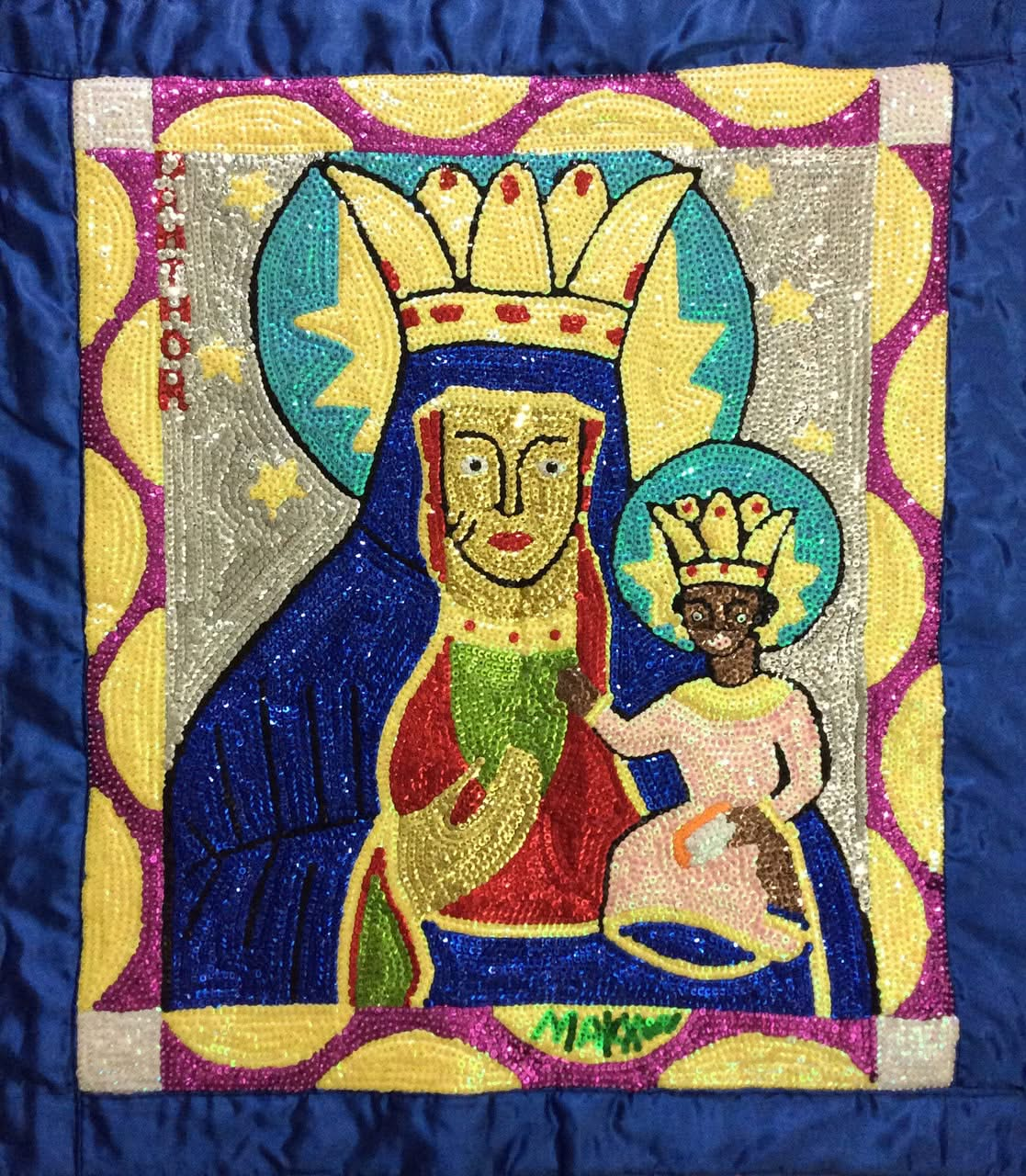1
/
of
1
Maxxon Scylla 35"x31" Erzulie Dantor Haitian Sequined and Beaded Voodoo Flag on Satin, 2017 #3MFN
Maxxon Scylla 35"x31" Erzulie Dantor Haitian Sequined and Beaded Voodoo Flag on Satin, 2017 #3MFN
ee98cfa8-f212-a714-b578-59d8ba95c152
92d2dc53-1a90-452b-a4ec-9ea65808b399
Regular price
$0.00
Regular price
Sale price
$0.00
Unit price
/
per
Shipping calculated at checkout.
Couldn't load pickup availability
Description
Description
This is a Haitian voodoo flag individually sewn by hand in thousand of glimmering sequins and beads on satin. It is a 35"x31" banner that represents Erzulie Dantor in vodoo loa. Its shimmering and glistening beauty is not quite captured by the picture.
Erzulie Dantor is a dark-skinned, hardworking woman with tough country ways and she is fiercely very independent and vengeful. Erzulie Dantor is considered to be an extremely though lady who is often wild, over bearing, aggressive, and very difficult to deal with.The goddess of Jealousy, romance and passion. Despite her wild nature, she is seen as very maternal; Erzulie Dantor is the protector of children and women who have been abused or betrayed by a lover. Her personal story is a tragedy. She was a warrior who fought with her people during the Haitian Independence However, her own people cut out her tongue, so that she would not tell their secrets if she got captured. Thus she is mute and can only speak a stammering monosyllable "ke-ke-ke-ke-ke-ke-ke" She is often pictured with her daughter Ti Koukoun who serves as her translator and interpreter. Due to her woman power, Erzulie Dantor is highly feared and respected. Silver Jewelery, Creme de cacao, ginger tea, black coffee, rice mixed with black beans, dry red wine, black female pig, fried plantain, two daggers, Florida water Perfume and strong unfiltered cigarettes are her offerings. In Haiti, Erzulie Dantor is mostly served by women maltreated by men and some men serve her as well, especially those who honor, love, respect and cherish women. Her husbands are Ogou and Ti jan Petro who is believed to be her cousin. Erzulie Dantor is mistaken as a lesbian due to her tough and sometimes masculine ways. Her days are Tuesday and Saturday. Her Catholic saint associations are: Our Lady of Czestochowa, Mater Salvatoris, Our Lady of Lourdes, Our Lady of Mount Carmel, our Lady of Prompt Succor and she is also associated with the Hindu divinity Kali-Ma.m (www.hougansydney.com)
A "drapo" Vodou is a handmade flag, typically embroidered and decorated with beads and sequins. Although flags may have been made in West Africa before the arrival of Europeans, the flags widely used there by 1600 were derived from European flags. They were used as symbols of ethnic, military or religious allegiance. The drapo Vodou also drew on Yoruba beadwork, Catholic vestments and Masonic aprons. In the 19th century and early 20th century most drapo Vodou were made from one or two colored fabric pieces decorated with embroidery, metal bangles and glass beads, with an image of the lwa made of shiny fabrics appliquéd to the cloth using techniques still followed in West Africa. Flags and banners used in the 21st century in rural areas often still have stylistically simple designs, in part due to the high cost of decorative material. With the older flags the background field that frames the image was usually decorated with widely spaced sequins or beads. Modern flag makers often completely cover the fabric of the field with sparkling sequins of one color, or with intricate geometrical patterns. Borders, which were either simple or did not exist on early drapo Vodou, have evolved into highly elaborate patterns. Nowadays, ateliers are dedicated to this art craft have opened creating a vibrant market for the flags. Thousands of glimmering sequins are individually sewn by hand making this a tedious and fine task.
About this artist
About this artist
Maxxon Scylla

ee98cfa8-f212-a714-b578-59d8ba95c152
92d2dc53-1a90-452b-a4ec-9ea65808b399









